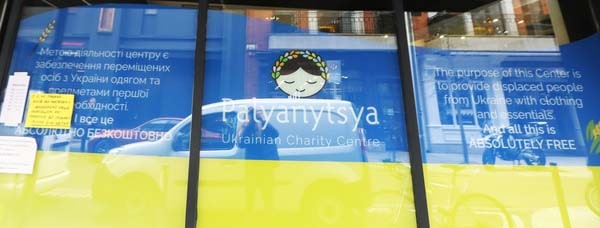
38,700 PPS numbers issued to Ukrainians
As of the week ending 19 June, 38,700 Personal Public Service Numbers (PPSNs) have been issued to individuals from Ukraine under the Temporary Protection Directive.
Women aged 20 and over account for 47% of arrivals to date, while those aged 0-19 (both male and female) account for 37%.
The highest percentage of those arriving (41% or 15,850) were categorised as 'one parent with children'.
As of 7 June, of the 6,890 children who arrived from Ukraine and enrolled in school, 71% were in primary education, while 29% were in secondary education.
Social-welfare payment
Based on data currently available to the CSO, of the arrivals from Ukraine aged 18 and older, 89% showed activity in administrative data after 15 May. This means that they were recorded as picking up a social-welfare payment, changing address, or paying tax.
Statistician Karola Graupner said: “This release includes an analysis of Ukrainian arrivals who are availing of support and services from the Department of Social Protection, as well as providing insights into primary and secondary school enrolments overseen by the Department of Education.
“Also included is an experimental measure of arrivals from Ukraine that were still administratively active after the 15 May, incorporating PAYE Modernisation (PMOD) data".
Post-office data
Graupner added that post-office data showed that arrivals from Ukraine were present in all LEAs. North inner city Dublin had the highest number of associated arrivals from Ukraine, at 1,245.
“Our analysis also shows that the rate per 100 of the population ranges across all LEAs in the country from 0.01% to 7.28%. The LEA with the highest rate is Ennistimon in Clare,” the statistician added.
The statistics are derived from a weekly Department of Social Protection (DSP) extract which the CSO receives every Monday.
The figures are estimates of the numbers arriving from Ukraine as some may not have received a PPSN yet, while others may have received a PPSN earlier in the crisis but are no longer resident in the State.
The CSO data shows that active welfare claims jumped from 2,048 in the week ending 13 March, to 30,172 in the week ending 19 June.
A total of 10,158 unrelated individuals have arrived, along with 1,033 couples without children, (2.066 people), 1,658 couples with children (6,454 people), 5,894 families (14,272 individuals) comprising one parent with a child/children, and 202 in other categories.
Dublin has the highest number of children enrolled in schools, at 1,205, while Monaghan has the lowest at 23.
The number of weeks between arrival and enrolment in schools varied between 1.3 and 3.1.
Junior infants
The highest primary-school enrolments are in junior infants, at 756, while there are 1.023 students enrolled in junior-cycle programmes, and 267 in Leaving Cert programmes.
There are a total of 11,633 children associated with a child-benefit payment, with 25,213 active welfare claims, and 17,137 in receipt of working-age income support, such as supplementary welfare or jobseekers’ allowance.